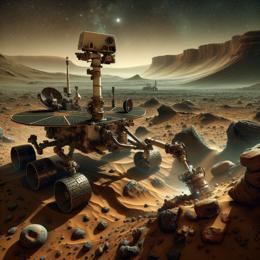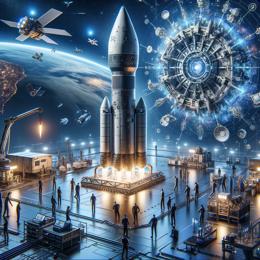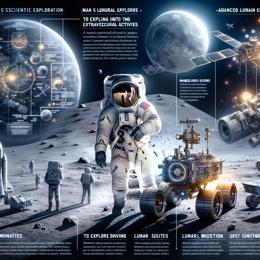Image created by AI
NASA JPL's 2025: A Year of Unprecedented Space Exploration and Earth Observation
As 2024 fades into the past, NASA's Jet Propulsion Laboratory (NASA JPL), managed by California Institute of Technology (Caltech), is embarking on what promises to be an invigorating and ambitious new year in space exploration and Earth observation. Despite the challenges posed by the Eaton Fire near JPL, affecting more than 200 of its employees, the laboratory's dedication ensures that the 2025 calendar brims with crucial missions and technological advancements.
The Spectro-Photometer for the History of the Universe, Epoch of Reionization, and Ices Explorer (SPHEREx) is a mission set to launch no earlier than February 27 from Vandenberg Space Force Base. SPHEREx, designed to resemble a trumpet's bell, boasts a size comparable to a subcompact car. This observatory aims to enhance our comprehension of the universe by producing four three-dimensional maps of the entire sky. These detailed celestial charts will help astronomers decipher the universe’s expansion post-big bang and identify life's essential ingredients preserved in celestial ice grains.
Another exciting venture is the Lunar Trailblazer, a mission tasked with unraveling the persistent enigma of lunar water existence. Despite temperatures that can surge on the moon's surface, there is burgeoning evidence of water. Lunar Trailblazer will deploy advanced mapping techniques to probe the abundance, location, and form of this water, especially focusing on the permanently shadowed craters that have eluded sunlight for billions of years. This satellite will share a ride to space with the Intuitive Machines-2 delivery to the Moon through NASA’s CLPS program, a launch penciled for late February.
In collaboration with the Indian Space Research Organisation, the NISAR (NASA-ISRO Synthetic Aperture Radar) mission is preparing for launch in the upcoming months. This state-of-the-art satellite, equipped with both L-band and S-band radars, is poised to deliver unprecedented insights into Earth's surface changes driven by natural phenomena such as volcanoes, earthquakes, and deforestation. This enhanced monitoring capability promises to be a leap forward in our approach to environmental management and disaster response.
The ESA/NASA partnership will see the launch of Sentinel-6B in November to continue the critical task of gauging global sea surface heights. Building on the legacy of its precursor, Sentinel-6 Michael Freilich, Sentinel-6B will endeavor to extend nearly three decades' worth of essential data that bolsters climate modeling and improves the accuracy of hurricane tracking.
Moreover, the introduction of the CADRE (Cooperative Autonomous Distributed Robotic Exploration) project, a technological demonstration aimed at advancing autonomous robotics in space, underscores NASA JPL's commitment to innovation. By facilitating the operations of three suitcase-sized rovers in a coordinated manner without Earth-based directions, CADRE is setting the stage for a new era in robotic space exploration and astronaut support.
Lastly, the ongoing SEAQUE experiment at the International Space Station and the journey of the Europa Clipper towards its 2030 rendezvous with Jupiter’s moon, Europa, highlight NASA JPL’s multifaceted approach to furthering our understanding of both the vast outer space and quantum technologies.
With such a robust lineup of missions, 2025 stands to not only deepen humanity's understanding of space and our home planet but also demonstrate the resilience and forward-looking spirit of NASA’s Jet Propulsion Laboratory.










